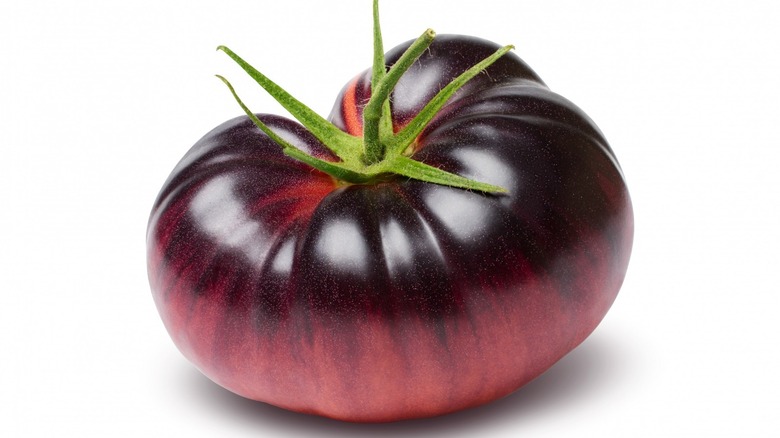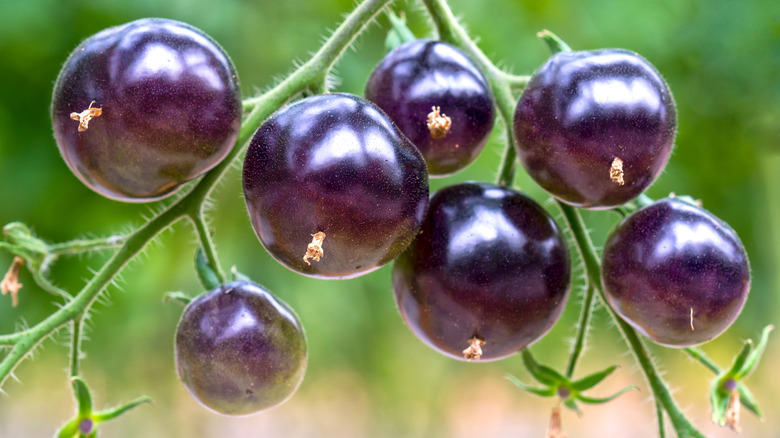Why You May Be Seeing Purple Tomatoes In Stores Soon
There are plenty of fruits and vegetables around the world that taste and look nothing like you'd expect them to. There's the blue java banana with a blue-colored peel and a flesh that tastes like vanilla ice cream, cotton candy grapes that are crossbred to taste like actual spun sugar, and the pineberry, which sits somewhere between a pineapple and a strawberry (via Modern Farmer). The recent approval of a new genetically modified plant by the USDA indicates that shoppers in the U.S. may see a new variety of vegetable (well, technically, fruit) in grocery stores very soon.
As CNN reports, the folks at Norfolk Plant Sciences have genetically modified the regular red tomato with DNA from snapdragons to produce a new variety of tomatoes. Don't worry, this isn't a tomato that tastes like grape candy or anything like that, it's just... a very purple one.
On September 7, the USDA reviewed the purple tomato and gave it the green light. The agency concluded that the tomatoes "may be safely grown and used in breeding in the United States" and that they were "unlikely to pose an increased plant pest risk compared to other cultivated tomatoes." Purple tomatoes were also found "not subject to regulation under 7 CFR part 340," which means they're almost at the point of being widely distributed in the U.S. So, while the tomatoes may make their way to your kitchens very soon, what exactly do these purple tomatoes bring to the table?
Purple tomatoes may be healthier than regular ones
According to British biochemist Cathie Martin who established Norfolk Plant Sciences, she and her team of scientists have been working on the genetically modified purple tomato for nearly 20 years (via CNN). Purple tomatoes get their dark color more from a group of pigments and antioxidants known as anthocyanins. While the purple hue certainly makes the look tomato interesting, Martin wanted to explore anthocyanins — the same pigment that also gives blueberries, blackberries, and eggplants their distinct color — for their health benefits. So, the team used regular tomatoes and modified them with snapdragons so that the tomatoes produced more anthocyanin.
Aside from their entrancing color, purple tomatoes have promising health implications. Because they are rich in anthocyanin, the Norfolk Plant Sciences website says that these tomatoes have high levels of antioxidants akin to that present in superfoods like blueberries. According to Healthline, anthocyanin can reduce inflammation and your risk of "certain cancers," boost heart health and brain function, and guard against the development of type 2 diabetes. But that's not all! A study published in 2013 indicates that anthocyanin doubles the shelf life of purple tomatoes by delaying the process of overripening.
While the team at Norfolk Plant Sciences have managed to secure USDA approval for purple tomatoes, they tell CNN that their next step is to seek approval from the FDA. The team then plans to work on a production and distribution system before launching test markets in the U.S. in 2023.

